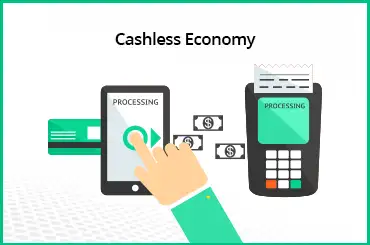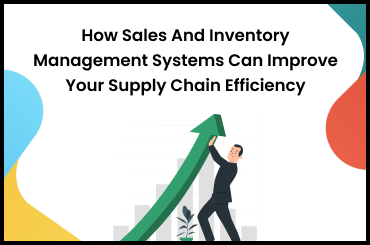A Sales Order is an integral document employed by businesses to delineate expectations concerning the execution of a distinct sales process. In this blog, we will explore the intricacies of Sales Orders, including the distinction between Sales Orders and purchase orders, the procedure for creating a Sales Order, and the importance of the Sales Order format. By mastering the Sales Order process and Sales Order management, companies can refine their operations, elevate customer satisfaction, and augment profitability. Discover how understanding Sales Order processing can empower enterprises to streamline their operations, ensuring customer satisfaction and propelling business success in the competitive market, especially for discerning decision-makers and business owners in SMEs.
What Is a Sales Order?
A Sales Order is a commercial document issued by a seller to a buyer, confirming the sale of products. The seller may be a manufacturer, wholesaler, retailer, or supplier. It provides details about the sale, such as the quantity and price of goods or services. Ideally, a Sales Order should encompass the delivery date, address, agreed-upon payment methods, information about sales terms, and additional logistics-related details. We will discuss the components of a Sales Order later in this blog post. Sales Order processing involves managing customer orders from the moment they are received until they are fulfilled and dispatched. This includes obtaining the customer's order information, verifying it, creating an order entry record, overseeing the order, and subsequently processing the order for payment and shipment.
Why Are Sales Orders Important?
Sales Orders play a pivotal role in managing sales processes, augmenting customer satisfaction, and elevating the efficiency and profitability of businesses. Here's why Sales Order management is crucial:
- Accountability: Sales Order act as formal requests for a customer's desired goods and services. They aid businesses in effectively managing their sales processes and customer relationships.
- Monitoring: Sales Orders also enable businesses to monitor customer demand, allowing them to plan their inventory, production, and delivery schedules more proficiently.
- Dispute-Reduction: Given that Sales Orders comprise a comprehensive breakdown of purchases, their prices, and terms or conditions, they help minimize the risk of disputes.
- Pricing: A timely generated Sales Order can also ensure businesses charge the appropriate prices at the right moment.
TranZact's inventory management solution empowers business owners and decision-makers in SMEs across India to navigate the complexities of Sales Order management effectively.
What are the Essential Elements of a Sales Order?
A Sales Order generally comprises the following elements:
- Customer Information: This includes the customer's name, address, and contact details for the individual placing the order.
- Order Number: A unique identifier assigned by the seller to track and manage the order effectively.
- Product Information: This encompasses a detailed description of the product being ordered, including its name, quantity, and price.
- Delivery Information: The specified date and method of delivery, accompanied by the shipping address.
- Payment Terms: The mutually agreed-upon payment terms, encompassing the due date and method of payment.
- Total Cost: The comprehensive cost of the order, covering the product price, shipping and handling charges, taxes, and any other additional fees.
- Signature: Signatures from both the customer and the seller, indicating that both parties have consented to the terms of the order.
- Special Instructions: Any supplementary instructions or requests from the customer, such as a preference for a specific shipping carrier or a request for expedited delivery.
While these are the primary components of a standard Sales Order, some organizations may incorporate additional information or particulars to create Sales Orders, depending on their industry and specific business needs.
What is the Sales Order Process and Procedure?
A typical Sales Order process commences when the customer requests a quote and concludes when they pay for the products. The process can be outlined as follows:
- Request: The customer submits a request for a quote (RFQ) to the vendor.
- Quotation: Upon receiving the RFQ, the vendor responds with the necessary information (quote).
- Purchase Order: If the customer finds the prices and terms acceptable, they issue a purchase order to the vendor.
- Sales Order Creation: The vendor then generates a Sales Order based on the details provided in the purchase order.
- Confirmation: The vendor forwards the Sales Order to the customer for confirmation.
- Preparation: Once the vendor obtains confirmation, they initiate the process of preparing the goods for delivery.
- Delivery: The vendor proceeds to deliver the order.
- Invoicing: Utilizing the information in the Sales Order, the vendor generates an invoice for the sale.
- Payment: The customer settles the invoice via the agreed-upon payment method, as established during the RFQ stage.
Sales Order Format
How to Automate the Sales Order Process?
Automating the sales order process using accounting software can help businesses streamline operations, manage inventory, and enhance the customer experience. Here's how automation can benefit your business:
Minimizes Work Time:
Automating data entry saves time and prevents errors in documentation, allowing your team to focus on more pressing tasks, such as customer service.
Enhances Customer Service:
Automation enables faster and more accurate sales order processing, leading to quicker delivery and improved customer satisfaction.
Allows for Scalability:
Sales order automation helps you identify changes in sales patterns, allowing you to adapt inventory and staffing levels accordingly. Advanced notice of fluctuations enables more effective planning and responsive marketing strategies.
Enables Remote Data Processing:
Automation allows you to process sales order data from anywhere, providing real-time information to make informed business decisions. Remote access to data ensures continuous support and inventory management, regardless of your location.
To automate the sales order process, consider using accounting software that offers a centralized system to manage all aspects of your business. Sales order automation streamlines the tasks of filling in information across sales documents, ensuring completeness and accuracy. By embracing automation, you can save time, improve customer service, and scale your business effectively while staying informed and making data-driven decisions.
What are the Benefits of Sales Orders?
Sales Orders offer several benefits to a business and here are a few of those many:
Increased Efficiency
- Vendors create a Sales Order before the delivery of goods or services, providing an opportunity to ensure accuracy by cross-referencing them with the purchase order and quote.
- Securely sharing these documents using file-sharing software can expedite the purchasing process, improve customer service, and make it easier to detect errors before shipment.
Streamlined Accounts Management
- Maintaining well-organized sales documents, such as quotes, purchase orders, Sales Orders, and invoices, is beneficial for accountants, as they can easily match them using order numbers in accounting software.
- This guarantees accuracy during invoicing, allowing the accounts receivable department to double-check the information before adjusting other accounts like costs of goods sold (COGS), inventory assets, and sales.
- This offers protection during an audit and enables you to make informed business decisions based on accurate information.
Optimized Inventory Tracking
- Precise inventory tracking is crucial for effective inventory management. Sales Orders integrated with a sales and inventory management system can help prevent backorders and streamline the procurement process by offering visibility on orders that must be fulfilled before shipment.
- With the capability to allocate inventory for specific customer orders, the software can be employed to record packing and shipping details in a single interface.
- Maintaining adequate product inventory can enhance your e-commerce store and solidify customer relationships.
- This is particularly important in B2B commerce, where timely delivery of products and services is a critical factor in establishing client trust.
Setting Up Your Sales Process for Success
- Sales Orders are a vital part of any business's sales process.
- The Sales Order procedure may differ based on the nature and scope of the company; however, it typically involves steps like checking the item's availability and cost, generating an invoice, and managing payment transactions.
- Additionally, Sales Order processing may also involve arranging for the shipping of the item and tracking the order until it is delivered.
By utilizing the power of Sales Orders, businesses can ensure their success and profitability in an ever-changing market. TranZact enables business owners to view all their Sales Orders on a single cloud-based dashboard, making it easy to monitor sales and inventory. This provides them with a clear view of how many quotations have been converted into confirmed sales and the required production quantity at any given time.
Sales Order vs Other Sales Documents
A Sales Order is a crucial document in accounting and inventory management. However, it's essential to comprehend the distinctions between a Sales Order and other sales-related documents, such as quotes, purchase orders, and GST invoices. The specific document a customer sends or receives is determined by their position in the buying process at any given time.
Sales Order vs Quotes
A Sales Order and a quote are both significant documents in a business's sales process. However, they serve different purposes and have varying implications.
- A Sales Order typically becomes a legally binding contract once accepted by the buyer.
- However, a quote represents an initial proposal from the seller to supply goods or services at a particular price.
- A quote is not a binding agreement and is used to give the buyer an estimate of the costs involved in a potential purchase.
- Quotes can undergo revisions and adjustments as needed until the buyer decides to proceed with an order.
Thus, while a Sales Order represents a confirmed sale, a quote is a preliminary offer that may or may not result in a sale.
Sales Order vs Purchase Order
A Sales Order affirms the sale of a product, whereas a purchase order validates the buyer's intention to make a purchase.
- It is a legally-binding document sent by a buyer to indicate their intention to make the purchase.
- A purchase order generally includes details such as the requested prices and the products.
- Once a buyer confirms the purchase order via a purchase order system or another medium, the seller creates a Sales Order.
Both these documents are connected, and the only difference between Sales Orders and purchase orders is the sender and receiver. Sales Orders become legally binding upon the buyer's acceptance, whereas purchase orders are legally binding once the supplier accepts them.
Sales Order vs Invoice
An invoice is a formal request for payment made by the seller to the buyer after the goods or services have been delivered or performed.
- The invoice includes the transaction details, such as the products or services provided, the price, and any applicable taxes.
- It serves as proof of the sale and forms the basis for the buyer to make payment to the seller.
Therefore, a Sales Order confirms the transaction details before it occurs, while an invoice requests payment for a transaction that has already taken place.
Implementing an efficient Sales Order process is crucial for businesses to maintain organization, enhance customer satisfaction, and achieve success in today's competitive market. TranZact's inventory management solution caters to business owners and decision-makers in SMEs, providing a comprehensive and easy-to-use platform to manage Sales Orders, streamline operations, and improve profitability. By leveraging the advantages of Sales Orders and utilizing the right tools and systems, businesses can stay ahead of the competition and ensure continued growth and success.
FAQs on Sales Order
1. Who issues a Sales Order?
The vendor issues the Sales Order and sends it to the customer to confirm the terms of the sale.
2. What is the main purpose of a Sales Order?
The primary purpose of a Sales Order is to document the details of a customer's request for goods or services from a business. It serves as a formal record of the sales transaction, including:
- the products or services ordered,
- the quantity,
- the agreed-upon price, and
- any other terms and conditions of the sale.
A Sales Order is typically employed to initiate the fulfilment process, ensuring that the customer's request is met accurately and punctually.
3. What comes first, a Sales Order or an invoice?
A Sales Order typically comes before an invoice in a sales transaction. A Sales Order is a document that confirms the transaction details before it occurs, while an invoice is a formal request for payment issued after the goods or services have been delivered or performed.
4. What is the difference between a sales order and a purchase order?
The main difference between a sales order and a purchase order lies in their roles in the sales process.
- A sales order is issued by the vendor and confirms the sale of a product, while a purchase order is issued by the buyer to express their intent to purchase.
- Purchase orders are legally binding when accepted by the supplier, while sales orders are legally binding when accepted by the buyer.
5. How do sales orders help with inventory management?
Sales orders play a vital role in inventory management by helping businesses track their inventory levels and allocate products for specific customer orders. By having an accurate record of sales orders, businesses can optimize their inventory procurement process, prevent backorders, and maintain adequate product inventory to meet customer demand.
6. Can a sales order be modified after it has been issued?
In some cases, a sales order can be modified after it has been issued, depending on the terms and conditions agreed upon by both parties.
- Changes to a sales order may include updates to the quantity, product details, shipping information, or pricing.
- However, both parties must agree on any modifications made to the sales order to ensure accurate fulfilment and prevent disputes.
















